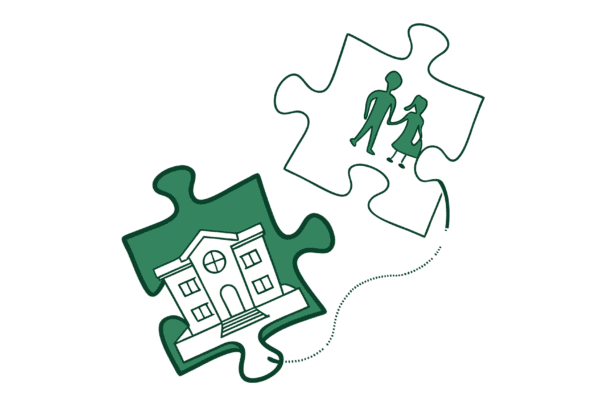As the owner of a hospice or geriatric practice in St. Louis, you are in a unique position. The demand for your services is growing, but the M&A market is in constant flux. A successful sale requires more than just good timing. It requires strategic preparation and a clear understanding of your practice’s value. This guide provides key insights to help you navigate the process and make informed decisions for your future.
Market Overview
The St. Louis market presents a compelling story for hospice and geriatric practice owners. Understanding the two sides of this story is the first step toward a successful sale.
A Growing Need
The demographic trends in St. Louis are a significant tailwind for your practice. As of 2022, nearly 15% of the city’s population was over 65. Projections show that by 2045, that number will be one in four for the entire metro area. This growing patient base creates a stable and increasing demand for high-quality hospice and geriatric care, making your practice fundamentally attractive to potential buyers and partners.
A Shifting Market
While local demand is strong, the national healthcare M&A landscape has its own rhythm. Broader economic and regulatory factors have caused a recent slowdown in transactions compared to previous years. This means that despite the need for your services, buyers are more selective. They are looking for well-run, profitable, and compliant practices. Your practice must be properly positioned to stand out in this more discerning market.
Key Considerations for Sellers
Beyond the numbers, sophisticated buyers look for stability and quality. Before you consider a sale, you should focus on several key areas of your practice. We find that owners who prepare a year or two in advance often achieve the best outcomes.
- Regulatory Cleanliness. Buyers will perform deep diligence on your compliance. Ensure your operations are fully aligned with Missouri Department of Health and Senior Services regulations, particularly Chapter 198. Any unresolved issues can delay or terminate a deal.
- Operational Strength. Is your practice dependent on you alone? A stable management team and well-trained staff are significant assets. Buyers are acquiring a functioning business, not a job. They want to see a smooth transition and operational continuity.
- Community Reputation. Your established patient base and referral sources in the St. Louis area are part of your value. Be prepared to articulate your practice’s unique position in the community and how it has built trust with patients and their families over time.
Understanding your practice’s current market position is the first step toward a successful transition.
Market Activity
Timing the market is difficult, but understanding its current state is critical. The environment for hospice M&A has changed, but it is poised for another shift.
The Recent “Cool Down”
The frenetic pace of 2021 and 2022, where some hospice valuations reportedly topped 30x EBITDA, has moderated. Throughout 2023 and early 2024, a combination of economic uncertainty and increased regulatory scrutiny led to a slowdown in deal volume. Buyers became more cautious, focusing on quality over quantity. For smaller hospices, this has meant that valuations have settled into more traditional ranges, often around 4x EBITDA.
Positioning for the Rebound
The slowdown is not expected to last. Most industry experts project a renewed uptick in M&A activity in 2025 as buyers with capital are eager to deploy it into a growing demographic sector. For practice owners, this creates a clear opportunity. The work you do now to professionalize your operations and clarify your financials will position you to capture maximum value when the market rebounds. Waiting until the rebound is in full swing may be too late.
The Sale Process
Selling your practice is not a single event. It is a structured process designed to protect confidentiality, create competitive tension, and maximize value. While every deal is unique, most follow a similar path. A well-managed process prevents surprises and keeps you in control.
| Stage | What It Involves |
|---|---|
| Preparation | Gathering financial documents, cleaning up books, and identifying operational strengths and weaknesses. |
| Valuation | Establishing a defensible market value based on financials, market data, and growth potential. |
| Marketing | Confidentially approaching a curated list of qualified buyers to solicit initial interest. |
| Negotiation | Managing offers, negotiating key terms in a Letter of Intent (LOI), and selecting the best partner. |
| Due Diligence | The phase where the buyer verifies all financial, legal, and operational information. This is where many deals fail. |
| Closing | Finalizing legal contracts and successfully transferring ownership of the practice. |
The due diligence process is where many practice sales encounter unexpected challenges.
Understanding Your Practice’s Value
A professional valuation is the foundation of any successful exit strategy. Buyers do not value practices based on revenue alone. They focus on profitability, risk, and growth. For a St. Louis hospice and geriatric practice, valuation typically revolves around a few key drivers.
- Adjusted EBITDA. This is your practice’s true cash flow. We calculate it by taking your reported profit and adding back interest, taxes, depreciation, and non-recurring or owner-specific costs. Buyers apply a multiple (often around 4x for smaller hospices) to this number to determine a baseline value.
- Patient Census. In hospice care, the number of patients you serve is a direct reflection of your market penetration and operational capacity. Some buyers will look at value on a per-patient basis, which has recently averaged around $60,000 per patient.
- Growth Story. Your practice’s story matters. A documented history of steady growth, a strong referral network in the St. Louis area, and a clear path for future expansion can justify a higher valuation multiple. Buyers pay a premium for a clear and believable growth narrative.
Post-Sale Considerations
The day you sign the final papers is not the end of the journey. Planning for what comes next is just as important as negotiating the sale price. A successful transition ensures your goals are met long after the deal is closed.
Protecting Your Legacy
You have spent years building your practice and its reputation in the St. Louis community. The right buyer will want to protect that legacy. During negotiations, we help owners secure commitments regarding staff retention, continuity of care, and the preservation of the practice’s name and culture. This ensures the hard work you put in continues to benefit your patients and employees.
Structuring Your Future
The structure of your deal has major implications for your financial future. Will you take all cash at close, or will you “roll over” some equity to participate in future growth? Will there be an earnout tied to future performance? Each path has different tax consequences and levels of risk. Planning for this early ensures the deal is structured to align with your personal and financial objectives, not just the buyer’s.
Your legacy and staff deserve protection during the transition to new ownership.
Frequently Asked Questions
What are the current market trends impacting the sale of hospice and geriatric practices in St. Louis?
The St. Louis market is experiencing a growing demand for hospice and geriatric care due to an aging population, with projections showing one in four residents over 65 by 2045. However, national healthcare M&A activity has slowed due to economic uncertainty and increased regulatory scrutiny, making buyers more selective. Valuations have moderated to around 4x EBITDA recently, but an uptick in transactions is expected in 2025.
What should I do to prepare my hospice or geriatric practice for sale in St. Louis?
Preparation involves ensuring regulatory compliance with Missouri Department of Health and Senior Services regulations, especially Chapter 198, strengthening operational stability with a capable management team, and building a strong community reputation through patient trust and referrals. Owners who prepare their practices at least a year in advance typically achieve better sale outcomes.
How is the value of my hospice or geriatric practice in St. Louis determined?
Value is primarily based on adjusted EBITDA, which reflects true cash flow by adding back interest, taxes, depreciation, and non-recurring costs to reported profit. Buyers typically use a multiple of around 4x EBITDA for smaller hospices. The patient census and a compelling growth story with a strong referral network and future expansion potential also influence valuation.
What does the sale process for a hospice or geriatric practice typically involve?
The sale process includes several stages: Preparation (gathering financial documents and assessing operations), Valuation (establishing market value), Marketing (approaching qualified buyers confidentially), Negotiation (managing offers and terms), Due Diligence (buyer verification of details), and Closing (finalizing contracts and ownership transfer). A structured process helps protect confidentiality and maximize value.
What post-sale considerations should I keep in mind after selling my hospice or geriatric practice?
After the sale, it is important to protect your legacy by ensuring commitments from the buyer regarding staff retention, continuity of care, and preservation of the practice’s culture. Additionally, you should plan your financial future by deciding on deal structure options like cash at close, equity rollover, or earnouts, which have different tax implications and risk levels. Proper planning aligns the deal with your long-term goals.



